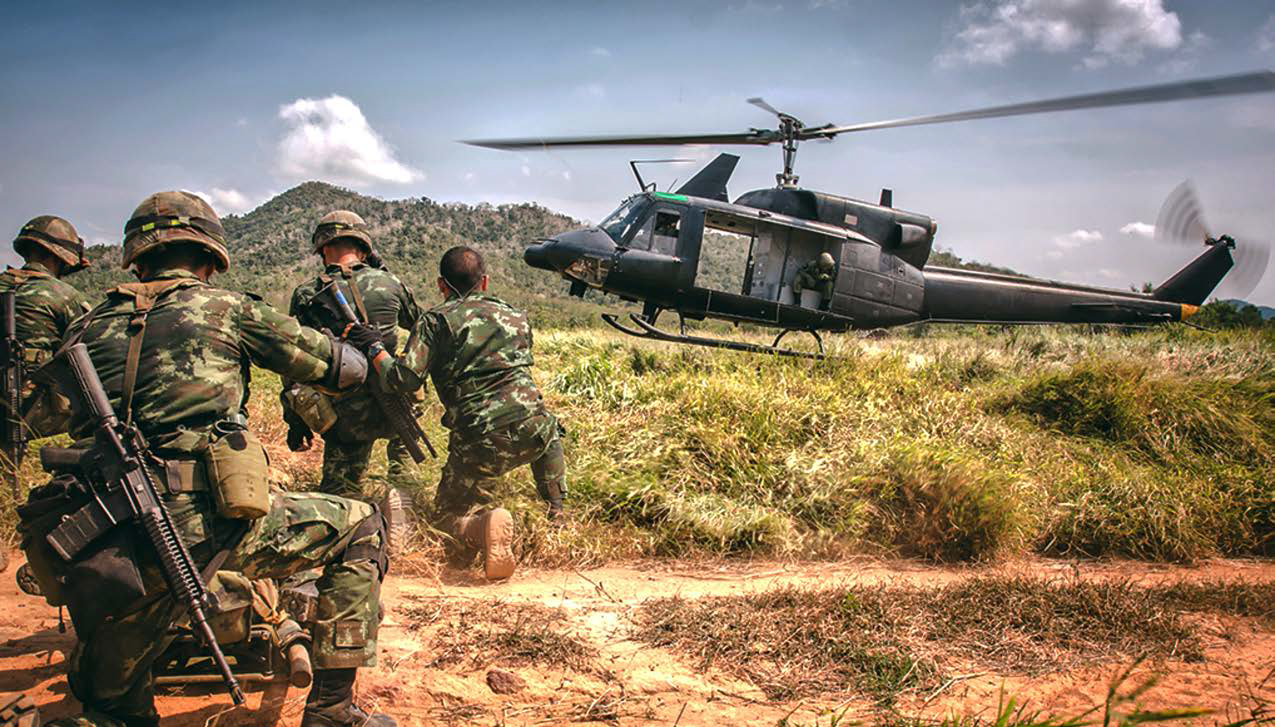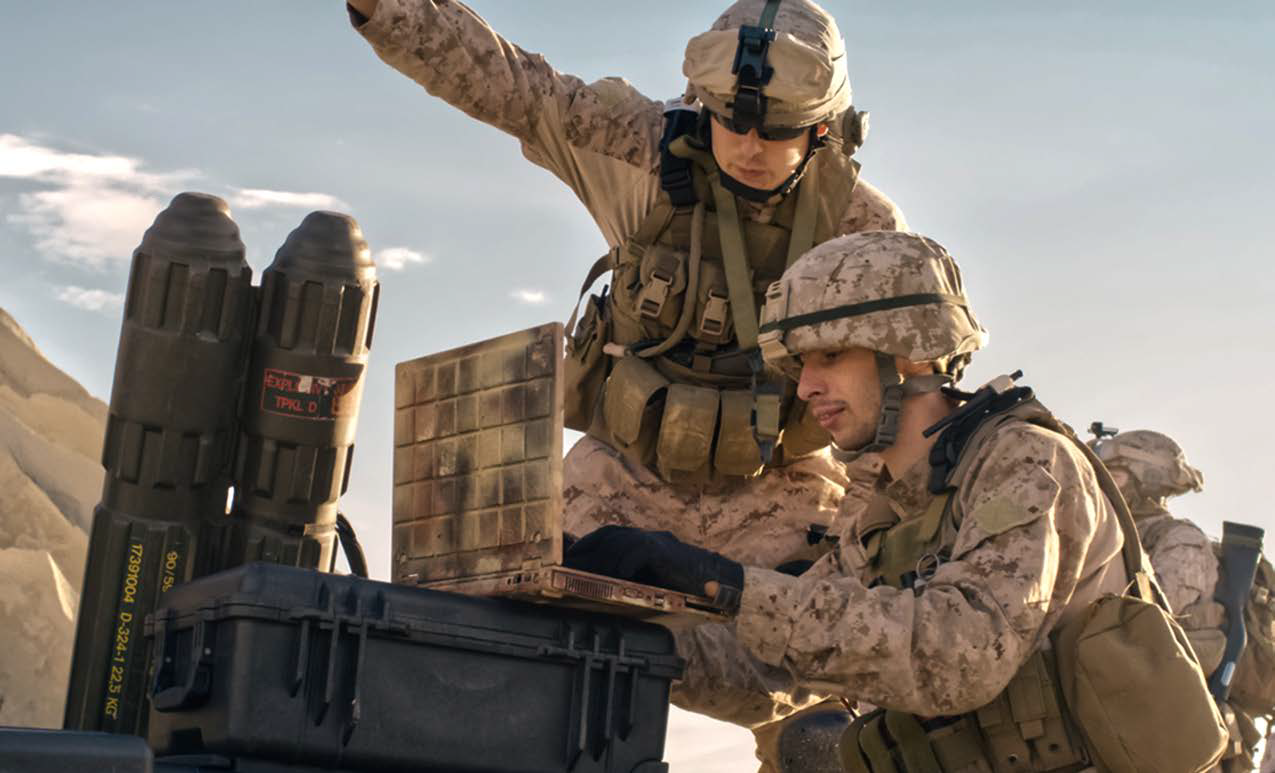Mr. Ori Naor is Vice President, Global Defense Sales, for Gilat Satellite Networks. In this role, he is spearheading various innovative projects at the forefront of Military SATCOM. Previously, Mr. Naor served as Director of Programs & Business Development, Elbit Land Systems, and was responsible for securing significant defense contracts around the world.

Prior to joining Elbit, Mr. Naor served in various operational and technology positions within the Israeli Defense Forces, achieving the rank of Lieutenant Colonel.
Good day, Mr. Naor. You have been involved in the defense industry for several years. What are your key observations?

Ori Naor
Ori Naor
Digital transformation in the military ecosystem continues to shape the future of the military communications market. Seamless collaboration and connectivity are crucial for helping defense agencies realize modern and effective operating methods; sharing vast amounts of critical information (including data, video, and voice) in real time makes military maneuvers more efficient and effective.
To achieve this new level of connectivity and operational continuity, across the battlefield and despite any enemy efforts to block com munication, modern militaries are now, more than ever before, using satellite communications (SATCOM) to help ensure the successful completion of land, sea, and air missions.
This new paradigm, the net-centric battlefield, is achieved by implementing a globally interconnected, broadband communication network (including infrastructure, systems, processes, and people) that speeds up 2-way communications, allows resilient connectivity, and increases situational awareness. Terrestrial communication alone is no longer sufficient for today’s ground, air, and naval forces which all depend on real-time communication. SATCOM is a key requirement to meet these growing needs.
Furthermore, in today’s rapidly evolving landscape of military technology, there is a growing enthusiasm among militaries worldwide to leverage commercial technology, albeit with the necessary ruggedization and security enhancements. This shift is primarily driven by the realization that the “civilian tech ecosystem,” represented by industry giants such as Microsoft, Amazon, SpaceX, and others, is advancing at a remarkable pace, outpacing traditional defense industry timelines.
Military customers want to harness the agility and innovation of commercial technology, recognizing the imperative to keep pace with the ever-changing threat landscape and capitalize on the speed and scope of civilian technological advancements.
Gilat coined the term New Elastix Space Era to refer to the next generation of satellite communications, which includes multi-orbit constellations, software-defined satellites, and very high throughput satellites (VHTS.) What specific technological advancements are driving this evolution and reshaping how armed forces communicate and operate?
Ori Naor
The New Elastix Space Era is changing the way we live by delivering the most advanced and widespread connectivity the world has ever seen and is defined by launches of very large, software-defined, multi-orbit constellations and satellite capacity that is growing faster than ever before.
Satellites are becoming smarter and the cost per megabit is decreasing quite quickly. Very High Throughput Satellites (VHTS) are unlocking opportunities for new applications and cloud technologies are maximizing operational efficiencies.
In the realm of military operations, where agility, speed, and data exchange are essential, satellite communications have always played a crucial role. However, the emergence of smart Non-Geostationary Orbit (NGSO) satellites has ushered in the next generation of possibilities and capabilities for military satellite communications.
NGSO satellites orbit the Earth at altitudes much lower than traditional geostationary (GEO) satellites, allowing for improved global coverage, reduced signal latency, and increased flexibility in managing communication services.
Cumulatively, this allows for improved throughput (performance) and opens opportunities for new and improved applications. These advancements have brought about a transformative impact on how armed forces communicate, collaborate, and execute their missions.

Another trend in military SATCOM is the development of NGSO sovereign satellite networks. What are they and how do they differ from commercial satellite services?
Ori Naor
NGSO sovereign satellite networks are communication systems owned and operated by specific countries or governments, using satellites positioned in non-geostationary orbits. These networks are tailored to enhance communication capabilities for military, government, and national security purposes, setting them apart from commercial satellite services provided by private companies.
For instance, the IRIS2 constellation, owned by the European Union, will address pressing challenges by offering enhanced communication capacities to governmental users and businesses. It will ensure high-speed internet broadband in underserved areas, while supporting applications in situational awareness, crisis management, and the protection of key infrastructures.
Sovereign networks such as IRIS2 promise unparalleled communication capabilities and reduce vulnerability to adversarial disruptions, reinforcing defense capabilities and laying the foundation for secure and robust communication infrastructure in the future. The threshold to own and operate such constellations is decreasing, allowing more armed forces to use this concept.
What sets Gilat apart in the world of SATCOM technology for Defense and Government applications?
Ori Naor
First of all, that would be our combat proven solutions — these solutions already support soldiers that are operating in the most demanding operational environments and the feedback loop has been instrumental in elevating the operational value of Gilat’s offerings.
Through continuous refinement based on direct input from military users, Gilat has developed solutions that excel in terms of reliability and performance, ensuring that they meet and exceed the stringent requirements of modern warfare. This approach demonstrates Gilat’s commitment to delivering battle-ready technology as well as underscores the company’s ability to adapt to the evolving needs of the military. Secondly, product technology resilience which showcases Gilat’s approach to military technology that extends beyond advanced capabilities and cutting-edge solutions; it revolves around the core concept that resilience is a dynamic and evolving goal.
In the realm of modern warfare, staying one step ahead of the adversary is a strategic imperative as well as a crucial necessity. By remaining agile, adaptable, and forward-thinking, Gilat ensures that our solutions are not only resilient today but also equipped to meet the challenges of tomorrow.

This proactive approach aligns with the fast-paced nature of the military technology domain and reinforces Gilat’s commitment to providing military forces with the tools and strategies needed to maintain a competitive edge in the ever-changing landscape of national defense.
The SkyEdge VSAT platform is one of the cornerstones of Gilat’s SATCOM offerings. It is a full-scale, state-of-the-art SATCOM network designed to ensure mission-critical communications and C5ISR operations, meeting the needs of any modern defense organization.
With a rugged MIL-SPEC design, our field-proven system for land, sea, and air is suitable for any field condition, providing real-time feeds for any platform and compatibility with future unmanned and autonomous platforms.
It is important to note that the SkyEdge platform was originally designed for commercial use. Our military customers enjoy the speed and scope of commercial technology development with all the unique requirements of a military SATCOM system.
Furthermore, Gilat’s point-to-point (SCPC/MCPC) modems provide TRANSEC and anti-jamming capabilities for multiple, Communications-On-The- Move / Communications-On-The-Pause (COTM / COTP) applications, such as armored vehicles and manpacks.
Another technology playing a pivotal role in modern warfare is the Unmanned Aerial Vehicle (UAV). What is Gilat offering for UAVs?
Ori Naor
UAVs are a unique component in today’s modern battlefield. These terminals must be designed to operate autonomously, accommodating scenarios where operators may not be in proximity to the vehicle. They should seamlessly integrate with the diverse flight patterns of various UAVs and seamlessly integrate into the multitude of UAV architectures that are in use. Gilat recognizes the importance of lightweight SATCOM terminals designed to withstand rigorous conditions while maintaining robust and reliable communication links. Our proven, lightweight terminals for UAVs are optimized with advanced capabilities, increasing system robustness and reliability and engineered with advanced capabilities to ensure seamless data transmission and control.

What role do Solid State Power Amplifiers (SSPA) play in military applications?
Ori Naor
SSPAs play a major role in today’s next-generation, net-centric battlefield.
Recently, we announced that our U.S.-based Wavestream subsidiary launched “Endurance,” a new line of high-power, “always-on,” SSPA products (photo:right). Wavestream’s Endurance product line is positioned to lead the industry in linear power with its gateway-ready, fully redundant design that ensures the maximum available power for multiple carrier inputs.
The 500W Ka-Wideband Block Upconverter (BUC) covers military Ka- and commercial Ka-bands and features hot-swappable components for a truly “always-on” satellite communication solution. As a high-power, high-performance, high-availability modular amplifier solution, Endurance is particularly innovative in its ability to replace existing SATCOM solutions currently serviced by Traveling Wave Tube Amplifiers (TWTAs).
Separately, we already have a successful proof of concept (PoC) of converting analog signals to digital signals using the Digital Intermediate Frequency Interoperability (DIFI) 1.1 Standard. This standard will enable all manufacturers to build interoperable technologies that work in both open and closed network topologies, resulting in highly flexible networks and enabling the industry to respond rapidly to customer demands.
What are the benefits for defense organizations and governments to work with an end-to-end, in-house SATCOM solution provider?
Ori Naor
There are quite a few benefits, — here are my top three...
End-to-End In-House Capabilities: Our one-stop-shop approach empowers us to deliver solutions that address our customers’ specific challenges, rather than merely offering standalone platforms and technologies. By serving as a trusted partner, we alleviate the burden on our customers to assemble and manage an array of expertise and resources. We do that for them. We take on the role of piecing together the optimal solution, and when necessary, we incorporate components from outside of Gilat’s portfolio if this provides the best value to the customer.

Focus on User Experience: For any tech-oriented system to provide value to its operators, it’s imperative that the system be easy to use and allow the user to take it to its full potential. That requires an effective user interface. For optimal efficiency, SkyEdge provides SATCOM operators a much-needed network management system that enables full configuration, control and monitoring of all network elements and remote terminals, regardless of their physical location.
Optimized Resource Utilization: VSAT platforms optimize resources, streamlining operations and reducing downtime. After initial investments, long-term cost benefits emerge including reducing the total cost of ownership and lowering risk. In the Elastix Era – this requirement becomes even more important, as the degree of flexibility rises and with it the room for potential improvement. SkyEdge is category-leading in its capability to minimize the required bandwidth without compromise on performance.
What do you believe makes Gilat the trusted partner of choice for defense agencies and governments worldwide?
Ori Naor
Gilat’s track record, commitment to security, and continuous innovation have earned the trust of defense organizations across the globe. Our cutting-edge technology is a force multiplier in the net-centric battlefield, enabling defense agencies to fulfill their missions with confidence. Gilat’s end-to-end, in-house SATCOM capabilities are a testament to our dedication to providing the most reliable and advanced communication solutions for defense and government applications. With ruggedized antennas, adaptable VSATs, secure modems, and resilient SSPAs, Gilat empowers military forces on land, sea, and in the air to achieve their mission-critical communication goals. In an era where seamless connectivity is paramount, Gilat’s holistic approach ensures that defense organizations can rely on our SATCOM solutions in the most challenging and dynamic operational scenarios.

In my exploration of the world of SATCOM technology for defense and governments, I strongly believe that Gilat emerges as a leader in delivering advanced solutions for defense and government applications. The SkyEdge VSAT platform, point-to-point modems, lightweight UAV terminals, SSPAs, and end-to-end in-house capabilities make us the go-to-choice for secure and resilient SATCOM technology in today’s net-centric battlefield. Gilat continues to shape the future of military communications, providing defense organizations with the strategic advantage they need to succeed.
Gilat’s commitment to innovation and adaptability ensures that its technology remains relevant in the ever-changing world of modern warfare. Our solutions are designed to meet the stringent demands of defense organizations, providing the flexibility needed to address emerging challenges.


